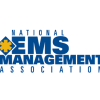A stuck accelerator causes a car to speed out of control, leading to a deadly crash, with the final pleas for help captured on a 911 call. A drunk driver crosses the median and runs head-on into another car, obliterating both vehicles. A lost bus driver misses a sharp mountain curve and his vehicle slides into a canyon, leaving dozens dead and injured. A high school student texting and driving misses a stop sign and smashes into a pedestrian. There is a common theme to each of these scenarios: EMS responds to minimize suffering and death.
More than 35,000 people died in traffic-related events in 2010. In public health, road safety and injury prevention circles, these numbers actually represent positive trends, but they are still unacceptable.
How do you improve these statistics even more? Better education? Better enforcement through better laws? Better engineering? How about better EMS?
With all the recent talk about the need for a lead federal agency for EMS in Health and Human Services, it’s instructive to recall the special connection between highway safety and EMS and how the current national EMS office ended up in the Department of Transportation in the first place.
In 1966, the National Academy of Sciences published “Accidental Death and Disability: The Neglected Disease of Modern Society.” That famous white paper ignited a revolution in safety for roads and vehicles but is also credited for launching the era of modern EMS. It also resulted in the creation of the National Highway Traffic Safety Administration, the future home of the national EMS office.
What the authors recognized back in 1966 has been codified in highway safety planning today. By federal statute, state highway departments are required to develop strategic highway safety plans (SHSPs), which describe how they will use the “four E’s” of highway safety—engineering, education, enforcement and EMS—to help reduce death and disability. There’s even a hint of special funding available to assist in EMS improvements.
There’s just one problem. Despite their common origins and interests, EMS and highway safety have moved apart over the years. The role of EMS in injury prevention, especially secondary prevention in the post-crash scenario (preventing an existing injury from resulting in death or a more serious condition) has been overlooked in highway safety planning and funding. Traffic engineers are a data-driven group, and one of the challenges with EMS is one of data—how many of the millions of lives saved or improved since 1966 can be attributed to EMS?
At the National Association of State EMS Officials meeting last October, a project leader for the initiative “Toward Zero Deaths: A National Strategy on Highway Safety” described a joint project of leading highway safety organizations. She encouraged EMS leaders to take a more active part in highway safety to help ensure EMS has a place at the table when highway safety planning is taking place. One area of common interest: funding to develop more robust EMS data.
What does a stuck accelerator, a texting teen, a drunk driver and a lost bus driver have in common? Despite the best efforts of engineering, education and enforcement, they all caused crashes, resulting in death and injury. When the first three E’s fail, the fourth kicks in. Highway safety and injury prevention are in the DNA of EMS. Run with it.
How many more people would have died without a strong EMS system in place in their communities? Looking at it another way in highway safety incidents, how many more could have been saved, or their injuries minimized, if a strong EMS and trauma system had been in place?
Keith Griffiths can be reached at editorinchief@emergencybestpractices.com.












